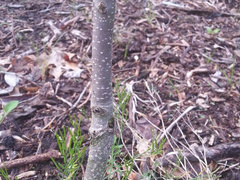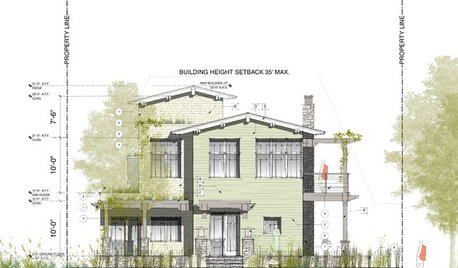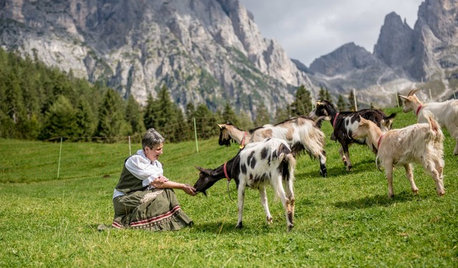poor success grafting persimmons
I grafted at least 41 stems (mostly one stem per tree but a few with two or three stems per tree) to scions from six different persimmons this year between April 3 and May 5. Of the 41 I recorded 27 were kakis and 14 were virginianas, all grafted onto native seedlings in my pastures except for 2 potted virginianas. Only 3 of the 41, one of each of the three virginianas, all in the pasture, are growing now, although one or two kakis are still green when I scratch the bark but without any growth or bud swell. The first 18 grafts I did were whip and tongue. All of those failed, although some grew really nicely for about a week, some even with a little shoot extension, before shriveling up and dying. (About three years ago I whip and tongue grafted some virginianas and had a little success with that, and they're mostly doing fine still.) The last 23 grafts I did this year (after April 18) were all bark grafts. Several of those had buds that swelled, turned green, and lengthened out a little before drying up and dying. Each of the varieties I grafted at least made it that far on at least one stem. I used David Osborn's bark grafting method from his online article for Quality Whitetails except I didn't use parafilm and I used pine rosin to seal the cut tip. I had pretty good success using the same method with a few pears this year. One of the 3 virginianas that's growing looks really vigorous: a foot or two of new growth and the stem above the graft is even larger in diameter than the stem of the stock right below it. The other 2 virginianas look really weak with really small leaves and probably not even an inch of shoot extension, but they're hanging in there.
So that's my long story. Is there better hope for me? Should it tell me anything that so many of my grafts started to grow and then dried up? I'd much rather not buy specialty products like parafilm, but maybe it's better than spending $35 or more per tree. Would parafilm make that much of a difference? Is there any other way to achieve better success?
Thanks!
Eric
Comments (25)
Scott F Smith
11 years agolast modified: 9 years agoSorry to hear that Eric. You picked an excellent source for information, that is one of the best articles I have seen on grafting. I would definitely use either parafilm or Doc Farwells (the latter is better in my opinion, as long as you make sure its not going to drip into the graft itself) to cover the grafts to prevent drying out. My personal method is to use parafilm to wrap the graft itself and then doc farewells to seal the graft and scion. I hope you also used the alu foil mentioned in the article, it is important to avoid overheating. You didn't mention how religious you were about removing shoots below the graft -- all need to be removed every few days or they will sap the graft.
Overall I have found persimmons hard to graft and have also had years of tons of failures in spite of best intentions. Some people think they are easy but I don't fall into that group. Some of my failures were traced to being too early or too hot. I would wait until at least 1" of growth has appeared on your stock, maybe more. Also if its going to be really hot (high 80's or more), wait for that hot spell to pass.
Scott
Monyet
11 years agolast modified: 9 years agoEric,parafilm and grafting film are not specialty products to me rather essential and very cheap. I buy 2 rolls of parafilm and one roll of grafting film that enough for plenty of spring grating. That's all i do,about $10.0 bucks.
results : nice tree's, actually too many.I like to cleft graft asian persimmon because barkgraft are not strong enough in high wind area's like mine.If you have price sions you have to go the extra mile to make a succesful take.If you like to bark graft make sure you support the the new growth with a piece of bamboo or something.If you do a lot of grafts that could become a choir. You can google cleft grafting or bark or anything else with good succes.The video's are pretty clear.
i PREFER to wrapped twice with parafilm and a few times with grafting clear tape because it need to stay there for a long time before i unwrapped the graft by making a slit through the grafting tape only(3 to4 months).
My succes is at about 80%,some sions just don't take or maybe i am a little clumsy with some.To some it might be overkill to me i got all the time in the world,been retired for plenty of years.Related Professionals
La Marque Landscape Architects & Landscape Designers · Lakewood Landscape Architects & Landscape Designers · Lyons Landscape Architects & Landscape Designers · South Orange Landscape Architects & Landscape Designers · Woodinville Landscape Architects & Landscape Designers · Surprise Landscape Contractors · Danvers Landscape Contractors · Englewood Landscape Contractors · Golden Gate Landscape Contractors · Longmont Landscape Contractors · Pine Hills Landscape Contractors · Roswell Landscape Contractors · Seven Hills Landscape Contractors · Tehachapi Landscape Contractors · Merrifield Landscape Contractorscreekweb
11 years agolast modified: 9 years agoWhen the grafts start growing and then fail there are a few things I think of. Scott and Persimmonbob covered most of them. They would be incorrect graft timing, too much initial sun exposure, not enough water, not removing competitive shoots, incompatibility of rootstock and scion, and poor quality of scionwood.
cousinfloyd
Original Author11 years agolast modified: 9 years agoScott, Bob, and creekweb, thanks very much for the helpful advice.
To follow up on what creekweb said about grafts starting to grow and then failing, I noticed you didn't say anything about parafilm on your list. Is parafilm just to keep the scion from drying up before it starts to grow? That particular problem with grafts starting to grow and then failing is the one I'd most like to address. If I had only done bark grafts and if I hadn't lost all the ones that started to grow, I'd be pretty happy right now. The only other point on your list I can see improving on would be too much initial sun exposure. (I didn't use the aluminum either, Scott.) Would you add that right away or would within a week of bud swell probably be good enough? I suspect a shield like that doesn't last in the wind and rain very long. If I had more potted persimmon rootstocks, would grafts on them get going better in heavy shade? Incompatibility may have been another issue, but I'm hoping the problem is something I have more power to influence. I can't realistically see doing much better with regards to timing, competitive shoot removal, water, or scion quality.
creekweb
11 years agolast modified: 9 years agoI missed the use application of parafilm or some other sealer to the graft on my list, but it does belong there. I always use parafilm or a similar product so I don't think about it so much, but that can certainly be your problem. The idea is to prevent the scion from drying out before it's properly callused. I would apply the shields when you make the grafts to protect the grafted scions from the drying effects of the sun.
Scott F Smith
11 years agolast modified: 9 years agoEric, the problem with persimmon grafts is they can just sit there for a few weeks doing nothing, and suddenly they decide to start callousing for a take. You need to keep the scion from dying in that idle period. Both sealing it and wrapping in alu foil are necessary steps in my mind. You don't need to make that fancy shield thing, I don't do it that way. But do wrap the whole scion and whole graft area plus a couple inches below.
Why do persimmons have such a strange behavior? I don't know, I wish I understood them better. They "think" a lot differently than other fruit trees.
Scott
Monyet
11 years agolast modified: 9 years agoI forgot a couple little things: really sharp knive for your wedgecut on the sion and trimmed a little of the sides,i mean a litle.On the barkgraft i only open one side and match the other side perfectly with the sion side.
If you use a splice graft like some nurseries do with paw paw's, which is more difficult in takes then persimmon, if rootstock and sion are the same size,you can taped the two together and make one cut through both at the same time so that you have a perfect match.Don't use an anvil pruner.mrtexas
11 years agolast modified: 9 years agoI have not found persimmon grafting any more difficult than any other fruit tree. I usually do a t bud but have also done whip/tongue and chip bud. Dormant graft wood is essential in the spring. It is best to wait until the rootstock is actively growing. I have not been successful in temperatures exceeding 90F. I always use vinyl budding tape which is really cheap and cover the whole graft including the bud. IMHO scientific parafilm is not strong enough for grafting and you can't wrap it tight enough. The parafilm specifically made for grafting should be OK but I haven't tried it as vinyl tape works so well and is far cheaper. After 3-4 weeks I uncover the bud and if it is still green, force the bud. I get 90%+ takes. The best thing for you to do is to find someone local who can give you hands on guidance.
Here is a link that might be useful: mrtexas
mrtexas
11 years agolast modified: 9 years agoThis is an excellent article. I've have done the same method with success.
"That particular problem with grafts starting to grow and then failing is the one I'd most like to address. If I had only done bark grafts and if I hadn't lost all the ones that started to grow, I'd be pretty happy right now."
The problem sounds like bad budwood or poorly stored budwood to me. I prefer 1/4 thick budwood with nice fully formed dormant buds. I always cut off the end bud if the budwood is from the tip of the branch.
Here is a link that might be useful: grafting
tucsonken
11 years agolast modified: 9 years agoI'm quite new to grafting, but wanted to try persimmons and figs. A F4F forum friend told me about a detailed persimmon grafting tutorial by Joe Real, on the Citrus Growers Forum (http://citrus.forumup.org/; Scroll down to: Tutorials (Grafting and Budding)>
Limb Bark Grafting Pictorial Demo.); note that you have to register before you can see the images.Using his method (and this is the first time in my life that I ever tried grafting anything), I had 100% success on both persimmons and figs.
I just checked the website to make sure the tutorial was still available, and the text is there but no photos. However, he uses the same method for citrus, and has another tutorial (Citrus Bark Grafting Tutorial - the Real deal!) that does have images, so my recommendation is to give this method a shot. It sure worked for me!
Some photos of my persimmon grafts can be seen in this thread: http://figs4funforum.websitetoolbox.com/post/Any-suggestions-where-to-buy-a-persimmon-tree-online-5725932?
skyjs
11 years agolast modified: 9 years agoHi Eric,
I'm not in the same league as Scott,Joe Real etc. but I will chip in my two cents.One thing Joe REal said that makes sense is "don't whip and tongue graft until the rootstock has made one leaf in the SPring". That's a great timing pattern that has helped me. It adjusts itself to your climate. In my experience, many people graft way too close to apple and pear grafting time and it will not help you. It's way later.
Another experience I had which is similar to Scott's, Mr Texas' and creekweb's is that since you are grafting later, it can be really $%#& hot. Once I had a successful Szukis graft, but I hadn't put drip water on it and it got real hot then. The one I put water on is alive and growing today. The other one died. Be careful with both heat and water. I do agree with wiping out the undergrowth, although here in the PNW it is not much of an issue.
ANother thing to remember is don't graft onto rootstock that you just planted. For some reason, persimmons will take much better on rootstock that has been in the ground at least one year. Maybe it is a deep root thing. These are just my experiences but they have helped me be more successful with my persimmon grafting.
John S
PDX ORlucky_p
11 years agolast modified: 9 years agoEric,
IMO, aftercare is as important, if not more so, than the type of graft. Persimmons want to 'do their own thing' - they seem to be dedicated to pushing growth from below the graft, and it's essential that you keep any shoots arising below rubbed off.
I've had a difficult time getting grafts to take on individual limbs in a branched tree; they just have a hard time getting established and growing, as the tree seems to shunt energy away from them and to it's own growing points.cousinfloyd
Original Author11 years agolast modified: 9 years agoI'm starting to think more about grafting persimmons again, and I just got to wondering if how high I'm grafting on the rootstock isn't contributing to my problem. Since I've been grafting onto volunteer seedlings I was mostly grafting onto about 4'-5' tall trees, and the grafts seemed tidiest if I more or less matched the scion diameter to the stock diameter, but that meant I was (without considering it) mostly grafting pretty high onto the little seedling. Bill Reid says about pecans on his pecan blog: "To ensure that there will be plenty of tree energy directed to pushing the graft, I like to place the graft union no higher than half way up the stock tree." I wonder if the same rule should generally be applied to persimmons, or does position not especially matter with persimmons?
cousinfloyd
Original Author10 years agolast modified: 9 years agoI thought I'd follow up on my post from last year with the early results from this year and a few curious anecdotes. I grafted as many or more persimmons this year as last year with the new addition of potted rootstocks. I brought the potted trees (rootstocks) into the house to get them to break dormancy early, so I grafted them a few weeks earlier than the in-ground trees. I also started using parafilm this year and initially shielding most of my grafts from direct sun with little aluminum foil bonnets. I also experimented with different styles of bark grafts (as in Osborn's demo folding the stock's bark flap over the scion with the bark scraped away; a more basic/standard bark graft as in JoeReal's demo on the citrus forum; three flap/banana grafts; etc.) with no noticeable differences with regard to grafting procedure. So far my grafting success may be marginally better but I'm largely seeing the same results as last year: buds elongate and green up very nicely (pushing through the parafilm now that I'm using it), sometimes leaves start to unfold, and then the graft starts to look like the stock just doesn't want to feed it any more, and the new growth dries up and dies. I have tried to rub off competing growth at least 2-3 times per week, and if I've had any improvement over last year I'd be inclined to say this is the main reason (and secondarily perhaps weather/rainfall differences.) However, it's easy to miss a bud or shoot (when it comes up near the ground in the grass on trees in the field; sometimes under the protected graft union area; even on my potted trees.) Some grafts just seem to be looking for an excuse to wither up and die, and a few grafts seem to really want to grow for no apparent reason. Perhaps the presence or absence of the fly psylla is the reason for that difference? I just realized in the last week or so that they were a factor in all this.
A few curious anecdotes:
One of the two grafts that took last year and survived until this spring did the same thing this spring that most of my grafts do: the buds started the swell and begin to green up, and then everything from above the (last year's) graft dried up and died. This was a graft from a local, wild tree that I especially liked, so I figure the stock and grafted portion would be as closely related as possible. The graft had gotten of to a slower start than the one other graft that survived, but it had put on close to a foot of new growth with a couple side branches before winter.
A 'hana fuyu' graft I made this year started off really nice, grew about 5 or 6 inches of new (nice, thick) stem, and had some leaves at least as big around as a golf ball... I thought the graft had taken for sure, but then it dropped all its leaves about a week ago and the stem has since withered up.
I grafted a rosseyanka onto one of my potted stocks. There were three buds on the scion, and the top one followed the pattern of greening up, starting to unfold leaves, and then losing vigor and withering up. I figured that was the end of that graft for sure, but now a few weeks later three buds (even one in the same position as the one that dried up before) have initiated a second attempted growth and are about ready to unfold leaves.
forestandfarm
10 years agolast modified: 9 years agoEric,
I used Dave's article as a starting point and had great success last year. I'm sure you've seen my Sex Change thread on the QDMA forums.
I was pretty cocky this spring and only 2 out of 10+ trees took! I have (fingers crossed so far) never had a graft fail after a bud opens. All of my failures are grafts not taking at all.
I've talked to some other persimmon grafters. One thing I did differently this year that they think might be a problem is that I skipped grafting rubbers. I just used parafilm. Folks tell me that with persimmons, you need a lot of pressure between the bark and the scion and that while parafilm hold it together, it does not apply enough pressure. My good experience last year compared to my poor experience this spring would suggest they are right.
I have focused on several things after a conversation with Dave that may account for my 100% success after buds break. He tells me that keeping the scion from drying out is extremely important. I use parafilm to cover the entire scion to hold in moisture. I use Doc Farwell to seal the wound. I use an aluminum foil shield on the south side to shade the graft and scion from direct sun.
Seems like if I could get your bud breaking success and you could get my after budding survival, we would be in shape!
cousinfloyd
Original Author9 years agolast modified: 9 years agoI may have already said this in another thread, but even if I did I thought it might be good to follow up here. After 3 years with probably over 100 failed attempts at grafting Asian and AsianX persimmons on volunteer D.v. seedlings, I think I finally figured out my biggest problem, which I suspect was persimmon psylla. Apparently the psylla are a lot worse here than elsewhere, because I went from having basically no success to having more success than failures when I covered the grafts with bags made of row cloth material (aka remay.) I also, incidentally, had some success last year but only on some potted trees that I brought in the house early to encourage them to get a head start on the season. I assume that being the house at first likewise protected them from psylla. Do you all think I'm interpreting the facts correctly?
forestandfarm
9 years agolast modified: 9 years agoI had a bout with psylla this year on young persimmons I had started from seed. I sprayed the leaves with Sevin at the first sign. I pinched off any leaves that had significant curl. All survived but they were slightly stunted.
Darkman
7 years agoCousin Floyd,
Can you update how your grafts are doing.
My experience with Persimmons (Asian scion on purchased not lifted native (dv) seedlings) is dismal. One take on fifty grafts. I believe my problem was that I was told you could graft to the dormant seedlings. But ALL initially flushed and appeared to be growing only to whiter and die. I do not know if we have the psylla here in Pensacola FL. I will research that. My goal is to make cocktail Persimmon trees. More of a hobby than anything. Probably give away more than I sell.
Anyway how are they doing. Anyone else want to jump in please do.
Can anyone tell me of any commercial grafters in the SE that may share knowledge and allow someone to observe or even help them.
Darkman AKA Charles in Pensacola
sunny_orchard
7 years agoI grafted them with green wood about may 31th. They are all on d. virgina rootstock and they took. I only had 1 dies out of 10. That seedling was too small for me to wrap properly. they are about 3 yrs old now. I relocated the smallest ones so it was kind of stuned. I noticed the root stock is bigger than the scion now. Hope this help.




Darkman
7 years agoThanks,
I have some potted dv and green wood. I may throw a few together and see what happens. Nothing really to loose except a little time.
Nice to see your success.
Darkman AKA Charles in Pensacola
Monyet
7 years agoDarkman, if you need some sionwood i might still have some leftover for your grafting needs.I can give a few different varieties, just for postage.
cousinfloyd
Original Author7 years agoDarkman, if your grafts started to grow but then withered and died, that sounds like psylla (among other possibilities). Besides bagging my grafts with bags made of row cover material to protect them from psylla for the first 6-12" of growth the other things that I think have helped me the most to improve on my persimmon grafting success are to graft onto slightly larger rootstocks -- I mostly let my rootstocks get up to at least 1" in diameter at the base before grafting -- and not grafting as high on the tree. I still may graft 4' high but only if almost all of the branches on the rootstock were already above that height. That might have been obvious to other people, but I hadn't realized.
Darkman
7 years agoThanks Bob and Floyd,
Bob I'll try whatever you can spare. You can PM or e-mail me from my profile and I'll send a money order. I can try dormant and green then under the same conditions.
Bob you have a couple other interests of mine PawPaws and Figs. I only lost three figs last year. An Alma, Smith and VDB. I have backups on all but the Alma and I have several sources for it. PawPaws are all selected seedlings from about 5 - 6 sources for good pollination. My grove is still young but I have had flowers for three years. Still had one open flower this morning. Now I just think I need to do some manual pollination to get fruit. Friend of mine in Biloxi did that this year and has one cluster now.
Floyd with Persimmons nothing is obvious. I can see where the larger rootstock could supply extra nutrition to the scion wood. I have a friend near me and he is grafting onto in ground native seedlings. I'll pass on your experiences to him also. He will save himself some failures with those tips. I'll keep trying till I get it right. I have a friend in Abbeville LA that once had a 12 n 1 persimmon tree he grafted. I have ordered about 300 Kaki seeds to grow and graft Asian varieties on. I am concerned with Persimmon Decline and using the Kaki is supposed to eliminate that.
Thanks
Darkman Charles in Pensacola
Alex Godun
4 years agolast modified: 4 years agoMy first grafting of persimmon was successful. I dug out sucker from friend. Got scions. Planted and grafted after leaves start growing. All in same year. Wrapped grocery bag around with placed wet paper towel. Did some check on moisture and brake growing suckers beneath. In 2 years tree about 8’. Than next years all my persimmon grafting was a failure.















sunny_orchard